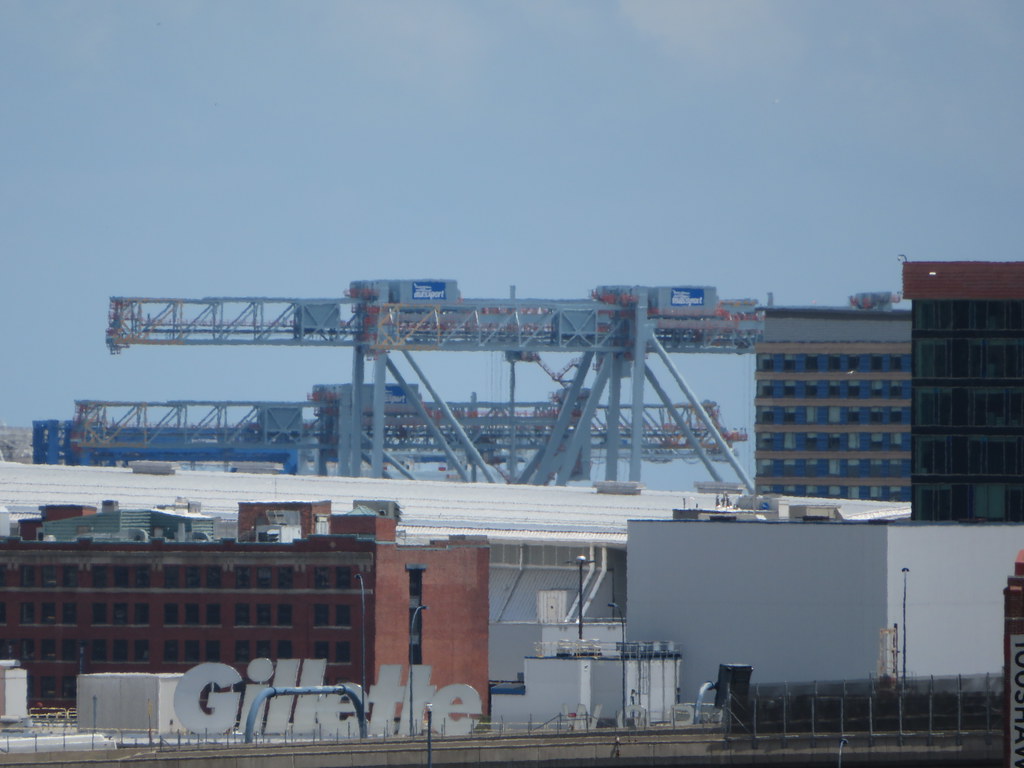I guess its a chicken or the egg type of thing, eh?
No, it's a $$$$$ thing. The revenue is flat-out not there. The incoming goods at Conley are all locally distributed. Straight-to-truck handles local business enormously more efficiently than a rail intermediary ever would at local distances, whether one finds the truck traffic that close to the CBD appetizing or not. To produce the $$$$ to put the rail option on the table you would have to find an
out-of-state market that so badly needs South Boston and South Boston goods only such that a manifested train can go from here to there before they unload to truck and final destination. There is no such potential business. PANYNJ, St. John, Montreal...they all outslug us mega for any destination 200+ miles away, and even Albany has its own "sea"-port on the Hudson taking hyper-local loads. So where's the usage case going to come from?
Then consider the complexity of the rail moves involved. CSX is quid-pro-quo'd to (today largely unused) overnight slots because of the complexity of crossing Amtrak Southampton Yard during passenger service hours...the same thing that ends up upending every crackpot Track 61 passenger scheme. That requires Train #1: a Readville-based overnight crew for the fetch job in Southie. Now, a couple tracks of loading space @ Conley isn't enough to sort a manifest onsite...make sure each car is arranged in the correct order of strings for splitting/combining trains to final destinations. Sorting for the manifest takes a yard with very many parallel tracks for switching, which is why CSX headquarters all sorting/classification functions in Framingham. That's Train #2: the daily Framingham-Readville yard-to-yard stocking job...and Train #3: the on-duty Framingham yard switcher for actually doing the pry-apart/recombine ordering work. Sorting gets doubly difficult when you have to work the third dimension in the form of the stacking. That takes even more space (compare Conley with PANYNJ or other ports that double-stack train cars right off the ship...nowhere near enough real estate), and absolutely none of the mainlines out of Boston have anywhere within 3+ feet of the required vertical clearances. Framingham itself doesn't have the clearance, so you'd probably have to sink a small fortune in raising a bunch of Westborough-Framingham B&A clearances another foot lest Train #4 have to be summoned to 'filet' the second stack in Worcester (which then requires moving some existing IM functions out of Worcester to West Springfield or elsewhere, because Worcester's currently tapped out). Then and only then can you send the road freight out to fulfill its manifest...on Train Not-Less-Than-#4-But-Potentially-#5.
But...fulfill its manifest to where, exactly??? Because nothing that goes into Conley travels 200 miles anywhere where the ^^above^^ sequence has a prayer of amortizing itself. It's only when you get further flung than what a single trucking shift can do that rail starts to get competitive. And, honestly, the fact that Conley already can't sort/classify onsite probably means the "break-even" drayage range is way more than 200 miles...probably more like 300-350. There's no way that'll economically wash. >200 miles out in any direction gets you into the drayage sheds of ginormously bigger ports like PANYNJ, Montreal, and St. John, so Boston does not have an effective range beyond what a single trucking shift can serve. Anything further out than what a single trucking shift can serve is going to be picking up the same cubed goods in New York, Montreal, etc...never here.
Is there a possibility that could change in 50 years? Sure. Maybe some white-hot IM commodity gets so hyper-specialized by port that it's sourced here instead of at the megaports, but gets shipped in standard cubes all the same. Like...if some import country were spatting with us but "truced" to serving Boston but not some other city. I couldn't even begin to fathom the mechanics of how things would flip on their head like that, because it's a pretty wack scenario on-spec. But stranger things can/could happen. There isn't, however, a usage case foreseeable today for how containerized ship-to-rail could work in Boston without enormous subsidized losses. So, no, it's not "chicken or egg" at all...it's "how big a loss do you want to run at for taking a few trucks off 93?"
I see you've also posited these questions on the RR.net port threads (Pan Am, New England Railfan, etc.), and are getting much the same answers there. Trust me...some of the people there doing the replying there know about a million times more about what they speak of re: shipping macroeconomics than I ever would. I would take those guys at their word. Conley rail is future-provisioned if there's ever a usage case...but the chances of that usage case ever materializing are extremely slim.

 IMG_9634
IMG_9634